News
Microwave-safe plastic releases billions of toxic particles into food
24 Aug 2023Plastic packaging that is labelled as ‘microwave safe’ releases billions of micro- and nano-plastic particles into baby food after being microwaved – and these particles are toxic to human kidney cells, according to a recent study. What does this mean for industry?
The presence of microplastics in food is not an unknown phenomenon. They have been detected in salt, bottled water, tap water, fish, and honey, and one study found that plastic teabags release billions of micro- and nanoplastics when left to brew at 95°C.

Evidence of their negative impact on health is mounting. Studies on animals suggest that exposure to microplastics causes gut microbiota dysbiosis, lipid metabolism disorder, brain damage and blood disorders while research on human cell lines suggests they can cause cytotoxicity in lung, immune, nerve, and kidney cells.
Babies and infants are often fed formula from plastic bottles or given food that is packed in plastic pouches. However, there is almost no research available on whether plastic-based baby products such as plastic containers and food pouches can serve as sources of exposure to infants and toddlers, according to scientists and authors of a recent study, which investigated the release of such particles from commercially available packaging.
Two billion nanoparticles released per cm2 of plastic packaging
The scientists from the University of Nebraska, Lincoln bought two baby food products purchased from a popular US chain store and studied the release of microplastic and nanoplastic particles under different usage scenarios – microwave heating, refrigeration, and room temperature storage. One brand was packaged in polypropylene and the other was a reusable food pouch that provided no material information. They also tested particle release in two substances – deionised water and 3% acetic acid – to mimic liquid foods and acidic foods.
Microwaving released the highest amount of both micro- and nanoplastics into food than the other use conditions, with some containers releasing as many as 4.22 million microplastic and 2.11 billion nanoplastic particles from just one square centimetre of plastic area within three minutes of microwave heating.
However, even refrigeration and room-temperature storage released millions to billions of microplastics and nanoplastics over a six-month period.
The type of plastic used also mattered, with polyethylene-based food pouch releasing more particles than polypropylene-based plastic containers.
Human cells die after contact with plastic particles
Publishing their findings in Environmental Science & Technology, the researchers used dietary intake data to estimate the extent to which infants and toddlers are exposed to these particles, calculating the highest estimated daily intake to be 20.3 nanograms (ng) per kilo per day for infants who are fed microwaved water and 22.1 ng/kg day for toddlers eating microwaved dairy products from polypropylene containers.
But how toxic are these particles? To determine this, the scientists carried out an in vitro study whereby they exposed human embryonic kidney cells (HEK293T) with the extracted micro- and nanoplastic particles that were released from the containers at a concentration of 1000 μg/mL. Over 76% of the human kidney cells died after 48 hours and this rose to 77% after 72 hours.
There is an “urgent need” for further research to investigate the health impacts of micro- and nanoplastic particles present in food, the scientists concluded.
Should the term ‘microwave safe’ be banned?
Asked by Ingredients Network whether terms such as “microwave-safe plastic” should be banned, lead researcher and co-author of the study Yusong Li from the Department of Civil and Environmental Engineering at the University of Nebraska, Lincoln in the US, again iterated the need for more studies.
“We found that a lot of micro- and nanoparticles [were] released from plastic food containers. We also found the potential toxicity of these released plastic particles on human kidney cells.
“It is worth mentioning that the concentration used in our toxicity study was significantly higher than the concentration released. Nonetheless, it is crucial not to disregard the potential health risks associated with exposure to micro- and nanoplastics. Further comprehensive studies are needed to clearly understand the health effect of exposure to these particles,” he told Ingredients Network.
Industry collaboration ‘necessary’ to set guidelines
As for implications for the food industry, Li said there was a need to “look out for” consumers.
“Let’s [...] rethink plastic food containers and how we use them, so we keep away those micro- and nanoplastic particles and keep our food and people safe and sound!”
“These findings emphasise the necessity of collaborating with manufacturers to establish guidelines for the appropriate usage of plastic containers,” wrote the researchers. “Additionally, it is crucial to work with caregivers in order to raise awareness about the potential impact of these particles.”
Related news
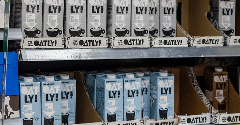
UK High Court allows Oatly to use 'milk' on packaging
17 Jan 2024
Oatly has scored a landmark victory in the use of the word milk after the UK High Court ruled against the country’s dairy industry and permitted the term to be used on packaging.
Read more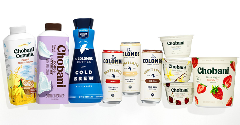
Chobani expands drink presence with La Colombe acquisition
16 Jan 2024
Greek yoghurt giant Chobani has purchased US coffee brand La Colombe Coffee Roasters for $900 million, furthering its expansion into beverage categories like coffee, oat milk, creamer and ready-to-drink offerings.
Read more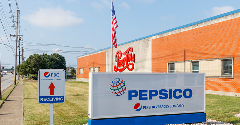
PepsiCo to reshape convenient foods portfolio with less sodium and more plant proteins
10 Jan 2024
PepsiCo has revealed details of two nutrition goals that look to reduce sodium and boost consumption of legumes, whole grains, and plant-based proteins as part of the multinational’s expanded convenient foods portfolio.
Read more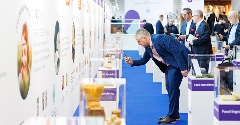
Meet the innovative ingredients showcased at Fi Europe’s New Product Zone
3 Jan 2024
The Food Ingredients category at Fi Europe’s New Product Zone featured 19 distinct and innovative products. From fermented delights to sustainable proteins, these ingredients are ready to make their mark in the market.
Read more
Fi Europe’s New Product Zone elevates the nutrition of everyday indulgences
22 Dec 2023
At Fi Europe 2023's New Product Zone, eight health ingredients, each offering an enhanced nutritional profile of various products, were on display. These ingredients address the evolving needs of the food and beverage industry and cater to consumers se...
Read more
MyAir plans to expand personalised adaptogen products to UK
15 Dec 2023
After launches in Japan and the US, B2B personalised nutrition company MyAir is eyeing the UK market with its white-label functional food and drink products. “Taste is a must – but it's not enough,” says its CEO. “Food has become functional and persona...
Read more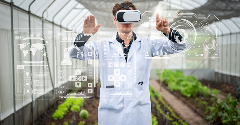
Augmented technology is the gateway to new food experiences
13 Dec 2023
Harnessing augmented reality as a digital tool could offer consumers increasingly personalised food and beverage experiences, opening up new ways to see and taste products, according to a report by Canvas8 and Givaudan.
Read more
Colombia introduces tax on ultra-processed foods
7 Dec 2023
In a bid to curb rates of obesity and other non-communicable disease, the Colombian government has introduced a tax on various ultra-processed food (UPF) and drink products.
Read more
Snack trends, ingredient claims, and plant-based perceptions: Highlights from Fi Europe 2023, part 1
7 Dec 2023
Value-led snacking, sustainability storytelling, and the importance of having a ‘star ingredient’: we asked consumer analysts and market experts at Fi Europe about the trends and innovations that are shaping the food industry.
Read more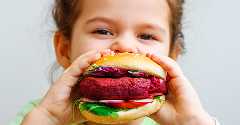
Consumers want more plant-based meat without GM ingredients
28 Nov 2023
Plant-based meat has been a hot and popular category for several years, but not all North American shoppers are embracing vegetarian alternatives that contain genetically modified (GM) ingredients, according to the Non-GMO Project.
Read more